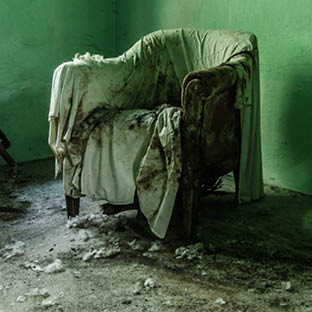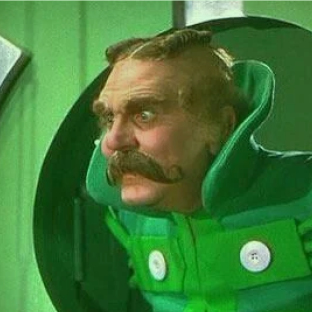A movie about Brian Eno provides insights into harnessing the strengths of new tech
An expanded and edited version of this story was just published by UX Collective online at this link.
Gary Hustwit’s new film, Eno, a bio-pic about the British performance artist, musician, and producer Brian Eno, uses new AI generative software to produce a unique viewing experience. Each time the film is shown, the AI software dubbed “Brain One” (an anagram for “Brian Eno”) sifts through the many clips and scenes and generates a new compilation. According to Ben Davis, a critic at ArtNews — who has seen the film three times — about two-thirds of the film remains about the same, but the other third has a mixture of footage that can change your perception of the film. Is it truly directed or edited when AI has the final cut?
Hustwit, known for Helvetica, the film about the ubiquitous typeface, knows what he is doing. I saw a version of Eno in Pleasantville, NY, and except for the annoying gimmick of showing a shaky screen while the AI is “thinking” about the next segment, I thoroughly enjoyed what was on the screen. It was exciting to see what came next. Who knows if the version I saw will be anything like the one you might see? But if Ben-the-critic is right, this film has a solid foundation that is enhanced by the shuffling supportive scenes. Let’s explore how Hustwit’s use of AI teaches us about using AI in our communications.
1. Every segment has to be well-produced.
Two-thirds of this movie provide a core story that is exquisitely told and edited. Hustwit articulates who Eno is and how he prefers to work. Eno employs techniques of disruption to stimulate creativity and starve off predictable outcomes. His music is created like a painting, the mistaken strokes of paint becomes something special that never would have happened if you hadn’t tried something different. Eno uses a deck of cards that he and Peter Schmidt designed, called Oblique Strategies, to heighten and deepen creativity. In the version I saw, Laurie Andersen reads a card with an abstract idea, and the film cuts to a new scene — is this the scene you would see? It doesn’t matter. The very act of juxtaposing two unrelated scenes is the whole point of the disruption. And it works because all of the scenes are well done and interesting. It’s like listening to Sargent Pepper on shuffle mode; you hear new things when the songs are not in their intended order, yet each song is still a gem.
2. If you were going to cut it, then cut it.
A good director or editor will tell you it’s hard to leave a scene on the cutting room floor. Sometimes, their favorite scene has to be sacrificed for the sake of the movie at large. In the classic film The Wizard of Oz, there is a scene that showcases the Scarecrow (Ray Bolger) in a show-stealing dance number that extends the “If I Only Had a Brain” number with acrobatic feats that would make Simone Biles blush. Bolger bounces off fences, flips around, and makes perfect landings on the yellow brick road. The scene is so good that it was later released as one of the highlights of the MGM compilation of the greatest dance segment in a film called That’s Dancing. How could they cut such a remarkable scene? Because it brings the film to a halt. It’s a little too comical and a bit too showy, but it makes the Scarecrow even more important than he already is. It disrupts the world of Oz and works better in a compilation of great dance performances. In Eno, the director did not have to cut any scenes since the AI remakes each version and cuts it to a speedy 90-minute running time. Yet the impression I got was that every scene was essential, there was no deadweight or overwrought scenes that destroy the film’s momentum. It works because Hustwit was selective and careful to include only the scenes that matter in the choices he provides for AI.
3. Use technology and structure to reinforce your theme.
Stephen Sondheim and George Furth’s Merrily We Roll Along, recently on Broadway, is based on George S. Kaufman and Moss Hart’s play that is told backward. The music and the performances were stunning, yet the backward structure seemed to be just a gimmick. Sure, some of the songs are experienced differently, like “Not a Day Goes By,” which is first sung as a lament for a marriage gone bad and then in the subsequent version — that takes place in the past — is revealed as a joyous expression of youthful bliss. We know what happens, so the youthful optimism is clouded by the despair of what comes next. The whole show suffers from the foreknowledge that the three stars will ultimately meet a fate of hollow success and broken relationships. This structure should reveal more, yet all it does is make joyous music have a downer edge. When Harold Pinter wrote his play, Betrayal, in reverse, he had higher stakes and more revelations in mind. He presents two couples in the throws of an affair that breaks the friendships and ruins the relationships. Then he turns back the clock with each scene and reveals who knew what when. We experience a whole new revelation on what really happened and who these people are. The structure is used to heighten the drama and propel the story. In Merrily, I often want to watch the show in order, in Betrayal, there is no story unless you see it as designed. Eno shows us how the structure can impact our viewing, and it ingeniously reveals how Brian Eno works and thinks about his art by presenting it in a format that reinforces the theme. Hustwit can make a traditional documentary like Mavis — the Mavis Staples story — which is told traditionally. But here, he uses the structure and the technology to help tell the story.
4. Make sure all the variables are gems.
A little FOMO is a good thing, I didn’t get to see the scene where David Bowie quits cocaine in part because of Eno, or the one where Eno recounts how he secretly peed in Marcel Duchamp’s Fountain as an act of artistic defiance. But I did see the “frog’s eye” scene, which seems to be an essential scene that defined the version I saw. Eno describes how a frog’s eyes are designed to blot out everything in a room that is not moving. What seems like a disability becomes a superpower when a fly appears on the scene, and the frog immediately sees it because it is the only thing moving. It cleverly encapsulates how Eno hears the subtle changes in his ambient music. I can’t imagine the movie without that scene, yet it may not be there when you see it. Hustwit included many gems that provocatively reshape each viewing.
5. Land the ending.
For Eno to work as a film, there has to be a core story that doesn’t change. The director needed to identify the story's core themes so they appear in every version. The core content has to tell the story in a believable and complete way. To prepare for seeing Eno my wife and I re-watched the movie Clue — you know, the one based on the board game and has three different endings. In 1985, when it was released in theaters, it was exciting to think that you might see a different ending than the one your friends just saw. You got to see all three endings when it was released on home video. Once you see all three endings, you can laugh and enjoy the insanity of the whole thing because it becomes readily apparent that none of the endings make any sense. The creators have undermined the whole concept of a good whodunit. If everybody or anybody can do it, it doesn’t matter who did it. Eno is successful because you care; the disparate scenes hold up, and the ending still feels complete.
Eno teaches us that AI and technology with unorthodox structures can be employed effectively. The same core principles of artistic creation still apply: Make every scene count, be judicial and critical when editing, use the technology to tell your story, and be sure to stick the landing. Ultimately, it’s not about the technology or the AI that produced it; it’s about the filmmaker's artistic vision.
Back to Insights




